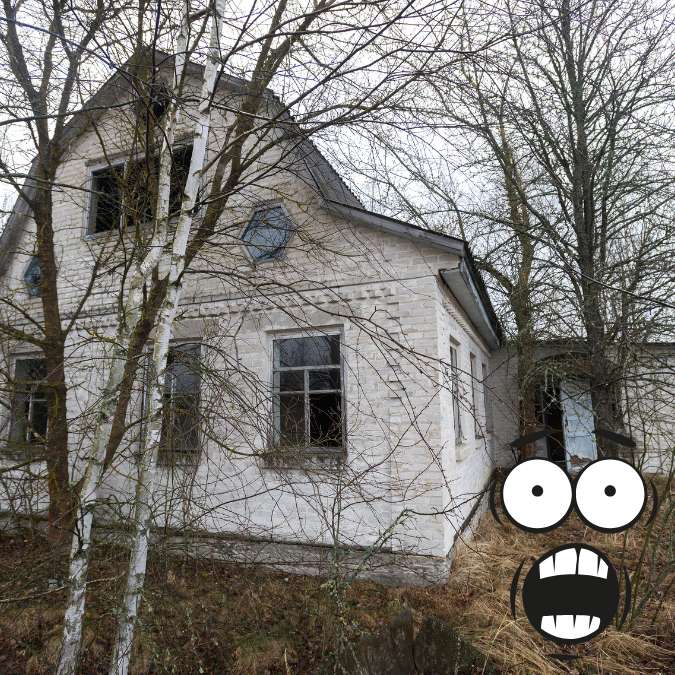
Spain — a land of sunshine, fiestas, and flamenco — also hides a darker, more mysterious side. Beyond the beaches and bustling cities lies another Spain: one of abandoned villages, haunted castles, eerie legends, and places whispered to be cursed.
For travelers with a taste for the supernatural, Spain offers some of the most intriguing and chilling destinations in Europe. From medieval ghost towns to mountains shrouded in myth, the country’s landscape tells countless stories of tragedy, mystery, and the unknown.
In this article, we’ll journey through Spain’s most mysterious places, exploring ghost towns, routes of legends, and “cursed” sites that continue to captivate adventurers, paranormal enthusiasts, and history lovers alike.
🏚️ The Allure of Mystery Tourism in Spain
In recent years, a new form of tourism has been gaining popularity in Spain — “dark tourism” or mystery travel. Unlike traditional tourism, this type of travel is not about relaxation or luxury; it’s about emotion, curiosity, and connection with the unknown.
Travelers are drawn to:
- Abandoned villages where time seems to have stopped.
- Legends that blend history, folklore, and superstition.
- Haunted places said to be touched by tragedy or paranormal activity.
Spain is particularly rich in such sites because of its long and turbulent history — marked by wars, epidemics, inquisitions, and ancient beliefs that still echo today.
Whether you’re a skeptic or a believer, these places offer something deeper than just fear — they offer a glimpse into Spain’s cultural soul, where myth and reality intertwine.
🕯️ Ghost Towns of Spain: Where Silence Tells Stories
Spain has more than 3,000 abandoned villages, many of them left behind due to depopulation, war, or economic hardship. But in some of these places, silence carries whispers of the past — and some visitors swear they feel they’re not alone.
1. Belchite (Zaragoza, Aragón)
Few ghost towns are as haunting as Belchite, destroyed during the Spanish Civil War in 1937. The village was bombed and left in ruins as a memorial to the horrors of war.
Walking through its crumbling streets, visitors can still see:
- The shell of the old church, scarred by bullets.
- Collapsed houses, overtaken by nature.
- The remains of the town square, eerily silent.
At night, many claim to hear distant bells or cries, believed to be the echoes of the battle that killed thousands. Today, Belchite remains a symbol of tragedy and resilience, visited by historians, photographers, and paranormal researchers.
2. Ochate (Burgos, Castilla y León)
Ochate, often called “the cursed village”, is one of the most famous paranormal sites in Spain.
Between the 19th and early 20th centuries, the village was devastated by plagues and mysterious deaths that wiped out nearly all of its inhabitants. Since then, countless visitors have reported strange lights, voices, and apparitions near the ruins of the church of San Miguel.
The area has been investigated by paranormal groups for decades, and some even describe seeing UFO-like phenomena above the nearby hill. Whether haunted or not, Ochate remains one of the most enigmatic places in Spain.
3. Granadilla (Cáceres, Extremadura)
Unlike Belchite or Ochate, Granadilla wasn’t abandoned due to tragedy — it was evacuated in the 1960s after the construction of a dam. However, its perfectly preserved medieval walls and empty streets make it one of the most atmospheric ghost towns in the country.
Walking through Granadilla feels like stepping into another era. The town is now open for visitors and has become a “living museum” of Spain’s rural past.
While there are no dark legends here, many travelers describe an uncanny stillness, as if the town is holding its breath, waiting for its people to return.
🧙♀️ Routes of Legends: Following Spain’s Myths and Folklore
Spain’s legends are as diverse as its regions — stories of witches, ghosts, and ancient curses fill its folklore. Some routes have even been designed to help travelers follow these myths and discover the mysterious side of the country.
1. The Route of the Witches – Zugarramurdi (Navarra)
Hidden in the green valleys of Navarra, Zugarramurdi is known as “the village of witches.” In the 17th century, it was the epicenter of one of Europe’s most infamous witch trials, conducted by the Spanish Inquisition.
Visitors can explore:
- The Cave of Zugarramurdi, where local legends say witches gathered for nocturnal rituals.
- The Museum of Witchcraft, which tells the story of superstition, persecution, and hysteria.
- The surrounding “Ruta de las Brujas” (Witches’ Route), which winds through forests once feared to be cursed.
Zugarramurdi isn’t just about fear — it’s about understanding how myth and religion collided in Spain’s past. The story of these so-called witches reminds us of how imagination and fear can shape history.
2. The Legends of Toledo (Castilla-La Mancha)
Few Spanish cities are as steeped in legend as Toledo, often called the “city of three cultures” — Christian, Jewish, and Muslim.
Night tours in Toledo reveal tales of:
- Ghostly monks wandering the alleys near San Miguel.
- Cursed lovers whose tragic story inspired centuries of folklore.
- Secret tunnels where alchemists supposedly practiced forbidden arts.
Every corner of Toledo seems to hide a mystery — and exploring it by lantern light is one of Spain’s most magical (and eerie) experiences.
3. Galicia’s Land of Spirits and Meigas (Witches)
In Galicia, in Spain’s far northwest, belief in meigas — witches or healers — remains alive even today. The region’s Celtic roots, misty forests, and ancient rituals give it an almost otherworldly atmosphere.
Some of the most mysterious sites include:
- The Costa da Morte (Coast of Death), named for its shipwrecks and ghostly legends.
- The Combarro village, known for its stone crosses believed to ward off evil spirits.
- The “Queimada” ritual, a fiery drink meant to chase away witches, recited with a traditional spell known as the “Conxuro da Queimada.”
🔥 “Owls, toads and witches, demons, goblins and devils... run away!”
This region captures the very essence of myth — blending pagan beliefs, Christian traditions, and a fascination with the supernatural that still endures.
💀 “Cursed” and Haunted Places: When Mystery Becomes Fear
While some legends entertain or teach moral lessons, others are genuinely unsettling. Spain has its fair share of locations believed to be “cursed” or haunted, where tragedy and mystery seem to linger.
1. The House of the Seven Chimneys (Madrid)
In the heart of Madrid stands a 16th-century mansion with a chilling legend. It’s said that a young woman named Elena, the wife of a royal officer, died mysteriously here — and that her ghost still appears on the rooftop at night.
Over the centuries, strange noises, flickering lights, and sightings of a pale woman in white have been reported. The building now houses a government office, but guards still claim to feel her presence.
2. The Palace of Linares (Madrid)
Another capital legend, the Palacio de Linares, was once the home of a wealthy 19th-century family. Rumors say that the couple discovered, too late, that they were half-siblings, and that they killed their child to conceal the scandal.
Visitors and staff have long reported whispers, cold spots, and crying sounds echoing through its lavish halls. Today, it serves as the Casa de América cultural center, but its ghostly reputation remains one of Madrid’s most famous mysteries.
3. The Sanatorio de Sierra Espuña (Murcia)
Deep in the mountains of Murcia lies the Sanatorium of Sierra Espuña, built in the early 1900s for tuberculosis patients. After decades of abandonment, its decaying walls and long corridors have become a favorite destination for ghost hunters.
Locals speak of footsteps, voices, and strange lights — and many who visit say they feel an inexplicable chill. Whether haunted or not, the sanatorium’s atmosphere is undeniably haunting.
🕰️ Why Spain’s Mysteries Endure
The appeal of mysterious travel in Spain goes beyond superstition. These stories and places survive because they speak to something deeply human — our fascination with death, memory, and the unknown.
Every ghost town, cursed palace, or haunted forest holds traces of real history: war, disease, injustice, or loss. Exploring them allows travelers to connect emotionally with the past, to walk where others suffered, and to listen to the stories that time refused to erase.
Moreover, this type of tourism supports the preservation of heritage. Many ghost towns and old buildings are now protected, visited, and valued again — not forgotten ruins, but pieces of collective memory.
✨ Tips for Mystery Travelers in Spain
If you’re planning to explore Spain’s mysterious side, keep these tips in mind:
- Respect the sites. Many are historic or sacred — avoid vandalism or trespassing.
- Travel safely. Some ghost towns are remote and structurally unstable.
- Join guided tours. Local guides often share authentic legends and insider knowledge.
- Go at night (if you dare). Many tours, especially in Toledo or Zugarramurdi, offer nighttime experiences for an extra thrill.
- Keep an open mind. Whether you believe in ghosts or not, each story offers a window into Spain’s rich culture and imagination.
🌒 Final Thoughts: The Magic of Spain’s Hidden Side
Spain is a country of contrasts — light and darkness, joy and melancholy, faith and mystery. Beyond the fiestas and cathedrals lies a landscape alive with legends, ruins, and memories that continue to intrigue and inspire.
Exploring Spain’s ghost towns, legendary routes, and “cursed” places isn’t just about chasing ghosts — it’s about discovering the stories that built the nation.
So next time you travel through Spain, look beyond the postcard views. Wander through a forgotten village, listen to the silence of a ruined church, or follow the whisper of a legend through the night. You might just find that the greatest mysteries are not the ones we fear — but the ones that remind us of who we are. 👻✨
Sources:
- National Geographic España: Rutas misteriosas por España (2024)
- RTVE: Los pueblos abandonados más fascinantes de España (2023)
- El País: Zugarramurdi, la aldea de las brujas (2024)
- Turismo de España (Turespaña): Rutas de leyendas y lugares encantados (2024)
- ABC Historia: Belchite, el pueblo fantasma de la Guerra Civil (2023)

